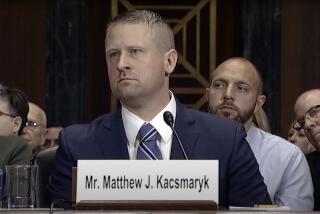Short-Circuiting the 9th Circuit : Politically influenced effort to divide court is being pressed in the Senate
- Share via
For the fourth time since 1983, a bill to split the 9th Judicial Circuit is now before the U.S. Senate. Debate over whether to redraw the borders of the 11 federal court circuits may seem like an arcane matter of judicial bookkeeping, but it is one of keen importance to all who have or may have business before the federal courts here.
The 9th Circuit, with 28 court of appeal judgeships and 99 district judgeships, is by far the nation’s largest, measured by the territory and population served as well as the number of judges. It encompasses California, Arizona, Nevada, Oregon, Washington, Idaho, Montana, Alaska and Hawaii.
The 9th Circuit is also home to some of the federal bench’s most distinguished and innovative--and controversial--judges. These jurists, many of whom reside in California and the Southwest, have long been a thorn in the side of conservatives because of their civil libertarian rulings and their consistent support for federal laws on natural resources.
The current effort to divide the circuit, a campaign led by Sens. Conrad Burns (R-Mont.) and Slade Gorton (R-Wash.), is motivated by that frustration. Their proposal would divide the circuit into two; California, Arizona, Nevada and Hawaii would compose the new 9th while the Northwestern states would become a new 12th Circuit. This division, opposed by most judges on the circuit, would isolate and diminish the power of progressive judges and allow Northwestern senators to control future nominations in the 12th.
But because political ideology alone is an unsatisfactory reason to make major changes in the federal judiciary, supporters of breaking up the 9th have defined “problems” within the circuit they say division can solve. They point to the 9th’s alleged backlog of cases as evidence that it is too large and unwieldy. But what’s the basis for this claim? The circuit’s own data indicates that the number of cases per judge and the pace at which cases are closed are at or below the national average.
However, case delay is surely exacerbated by the four longstanding vacancies on the Court of Appeal in the circuit. Yet Sen. Burns has held up confirmation of three nominees for these seats, insisting that the Senate vote first on his breakup proposal. That proposal, incidentally, would do little to ease delay since the new 9th would remain the largest circuit by far in terms of caseload volume and population served, with the 12th the second-smallest in the nation.
The Senate would best serve all within the 9th Circuit by quickly filling the vacancies on this court. The boundaries of all the federal circuits, the 9th no more than the others, are the product of politics, administrative need and historical accident. If revision is in order, more than ideology should dictate circuit boundaries and not just the 9th should be on the table.
More to Read
Get the L.A. Times Politics newsletter
Deeply reported insights into legislation, politics and policy from Sacramento, Washington and beyond. In your inbox twice per week.
You may occasionally receive promotional content from the Los Angeles Times.










